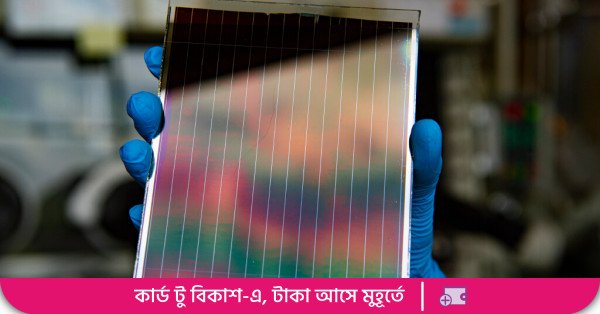Perovskite Solar Cells Offer Higher Sunlight Conversion Rates
One of the primary concerns surrounding perovskite solar cells is their stability and durability. Photo: Collected
“>

One of the primary concerns surrounding perovskite solar cells is their stability and durability. Photo: Collected
The world of solar energy is on the brink of a potential revolution, thanks to a new contender in the market: perovskite solar cells. These cells have impressive efficiency and promise to address many of the limitations of traditional silicon solar cells.
Perovskite solar cells are generating buzz in the renewable energy sector due to their remarkable efficiency and ease of production. Unlike standard silicon solar cells, perovskite cells offer significantly higher efficiency in converting sunlight into electricity. This could potentially lead to a substantial increase in the amount of solar energy captured and utilized.
According to DW, researchers at Helmholtz-Zentrum in Berlin have been working with the potential of perovskite solar cells for over a decade. Steve Albrecht is in charge of the research team which has achieved remarkable efficiency milestones with perovskite solar cells, sparking optimism for their widespread adoption.
Conventional silicon solar cells are made with silicon and they are quite inefficient in converting sunlight into energy. Only about 20-25% of sunlight is captured on a commercial scale. Silicon also needs to be mined and purified in energy-intensive processes that require more than 1,000 degrees Celsius of heat.
In contrast, perovskite solar cells demonstrate the potential to capture a higher percentage of sunlight, thereby significantly improving energy conversion rates. Eike Köhnen, another researcher at Helmholtz-Zentrum, told DW that 50% more sunlight can be converted into electrical energy.
One of Steve’s colleagues, Mathew, told DW while demonstrating the manufacturing process, “I believe that one of the main advantages of perovskite over silicon as a material is the ease of processing. So, silicon is something that is relatively energy-intensive to fabricate but this is something that can be done at close to room temperature. It doesn’t require much energy. So it’s easy to do.”
Mathew used a method called spin coating. But perovskite solar cells can also be printed onto surfaces using similar processes to those used for printing newspapers.
And what if a simple coat of paint can power a whole house or car? Perovskite solar cells, which can be in liquid form and still carry electricity, are the key to this innovation, making them the ideal choice for solar paint.
Researchers have been experimenting with spray-on perovskite solar cells, creating a thin film that could be applied as a tint for windows or layered onto roofs and outer walls of buildings. This could be a game-changer for harnessing solar energy in a convenient and accessible way.
Moreover, the production process for perovskite solar cells is less energy-intensive compared to silicon cells. Perovskite cells can be synthesized at close to room temperature with relatively abundant base materials, making the manufacturing process more accessible and cost-effective.
But while perovskite solar cells hold great promise, there are significant challenges that need to be addressed before they can become a widely adopted solution for solar energy production.
One of the primary concerns surrounding perovskite





